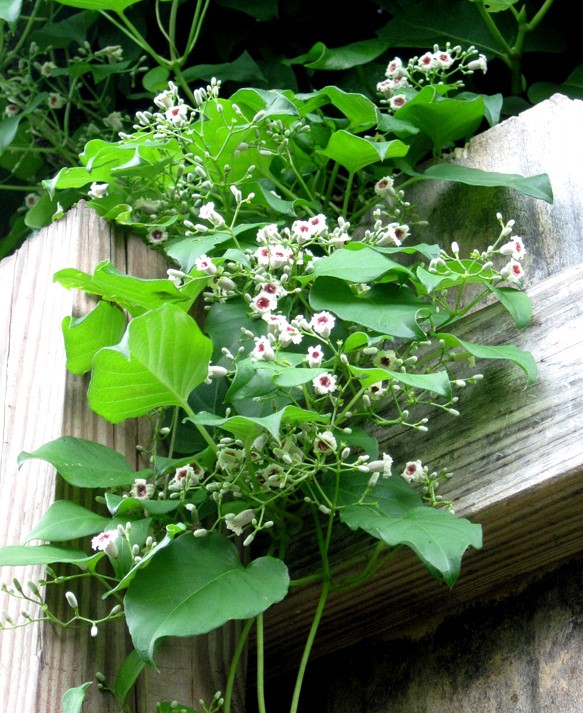
by Mark Tancig | Aug 19, 2016
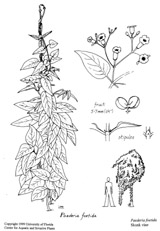
Skunkvine illustration. UF/IFAS Center for Aquatic and Invasive Plants.
North Florida gardeners have many non-native, invasive plants to deal with, but none quite as stinky as skunkvine (Paederia foetida). As the name implies, skunkvine has a noticeable smell, especially when the leaves are crushed, and it is an aggressive-growing vine, capable of smothering desirable landscape plants. Gardeners should learn to recognize and control this plant before it gets a foothold in the garden.
Skunkvine is native to eastern and southern Asia and a member of the coffee family (Rubiaceae). It was introduced to Florida prior to 1897 as a potential fiber crop, but quickly spread and is now considered a Category I invasive plant by the Florida Exotic Pest Plant Council (FLEPPC) and as a noxious weed by the Florida Department of Agriculture and Consumer Sciences (FDACS).
Skunkvine can be identified by the following characteristics:
- Aggressive twining vine
- Leaves are opposite each other
- There is a thin flap of tissue on the stem between the leaves
- Leaves have a strong skunk-like odor when crushed
- Clusters of small, tubular, lilac-colored flowers appear in late summer to fall
- Fruits are shiny brown and can persist through winter
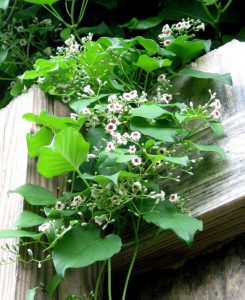
Skunkvine flowering. Photo by Ken Ferrin, UF/IFAS Center for Aquatic and Invasive Plants. Used with permission.
Once you have identified skunkvine in your garden, the next step is to work to remove it. For small patches, pulling by hand can be effective but will require monitoring to ensure it doesn’t resprout. When hand pulling, you want to be sure to get as much of the root as possible. For larger areas, chemical control using herbicide products that contain triclopyr, imazapic, or aminopyralid are most effective. Carefully reading the product label will help determine which product to purchase.
Since skunkvine can be easily spread by seed and fragments of stem, care must be taken when disposing of it. The best solution is to place plant debris into a trash bag and dispose of it with your regular household garbage.
By knowing how to identify and manage skunkvine, north Florida gardeners can keep it from stinking up their own gardens, their neighbor’s gardens, and surrounding natural areas that support our native wildlife.
References:
Langeland, K. A., Stocker, R. K., and Brazis, D. M. 2013. Natural Area Weeds: Skunkvine (Paederia foetida). Agronomy Department, Florida Cooperative Extension Service, Institute of Food and Agricultural Sciences, University of Florida. EDIS document SS-AGR-80.
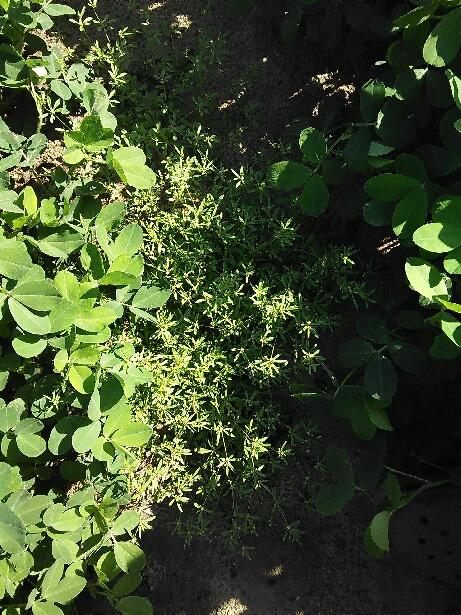
by Mark Tancig | Jul 5, 2016

When you don’t know what’s ailing your plant, ask an expert.
Many gardeners get stumped when a favorite plant of theirs comes down with a strange “something”. Many of these gardeners know about UF/IFAS Extension and call their local horticulture and agriculture agents for assistance in figuring out what’s going on. However, even these experts are often stumped by what they see. Fortunately, the agents have another layer of experts to fall back on. In addition to the resources in Gainesville, we have the Plant Disease Diagnostic Clinic, located at the North Florida Research Center in Quincy. Plant pathologists here can help determine what fungus, bacteria, virus, or viroid may be the problem.
Plant pathologists are basically plant doctors. They use all sorts of sophisticated techniques to determine what is the cause of a particular plant problem, from growing out fungal spores to examining DNA. Not only do these plant doctors tell us what the ailment is, they also provide recommended cures, or control options. They are also doing research to prevent different diseases from taking hold in our area and reduce the impact on our local growers.

Plant pathologist at work!
At a recent workshop in Quincy, we learned that plant pathology researchers are working on a fungus that affects watermelons, virus and bacteria that can wipe out a farmer’s tomato crop, and a virus that could impact our local roses. Working as a team of scientists, they study these pathogens in the lab and conduct controlled field experiments to figure out which techniques are most effective. Some of this research is leading to different methods and/or products that can help growers and gardeners alike keep their fields and landscapes healthy.
So, if your plants have problems, please contact your local Extension Office. If they don’t know the answer, then the network of scientists, including plant pathologists, in the UF/IFAS Extension family can be called on for backup to provide you with the best possible answer.
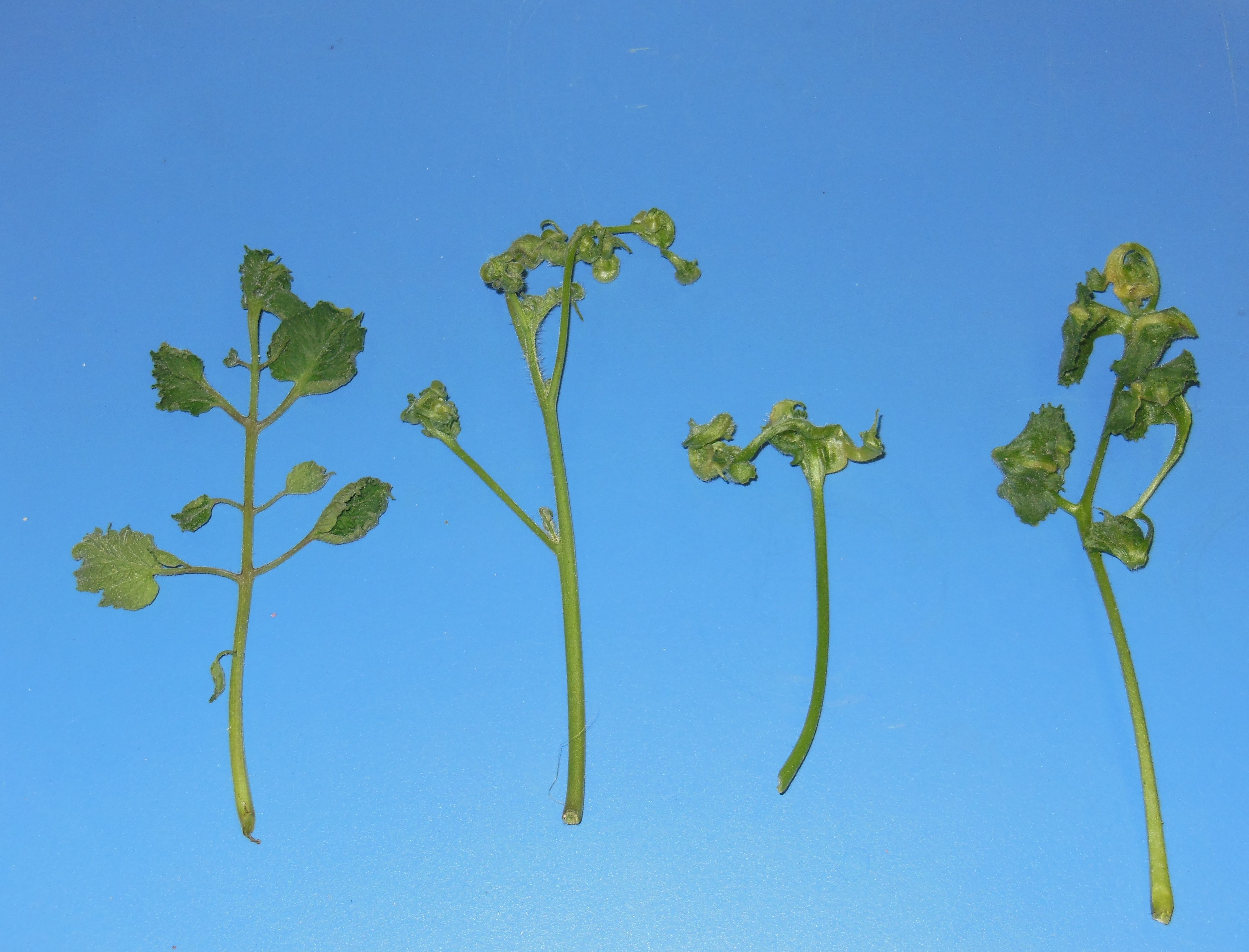
by Mark Tancig | May 24, 2016
Humans have used animal manures to fertilize food crops for thousands of years. Manures are an organic source of plant nutrients and are often a waste byproduct that must be properly managed when raising animals. Today, many farmers and backyard gardeners continue to use animal manures to provide nutrition to their crops. However, a recent experience at our local extension office brought to our attention the need to know what else, besides nutrients, is in the manure used.
A local backyard gardener brought in samples of tomato plants that had strange new growth. She had purchased the tomato plants, along with other vegetable plants, from a local nursery. When she repotted the tomato plants into larger pots, she added horse manure from her own horses to the soil mix. She then noticed this strange growth on the tomatoes, but not in the other vegetable plants that were repotted without adding horse manure. Herbicide damage was one of the first potential causes we suggested, since the new growth was twisted and distorted, a common symptom of plants that have been sprayed by herbicides. The gardener was sure she had not sprayed any herbicides near these plants, or in the pasture where she keeps her horses.
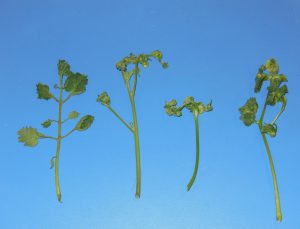
Herbicide damaged tomato plants. Photo by: Mark Tancig
Photos of the tomato plants were shared with other NW District agents and an agriculture agent with livestock and hay producer experience had the probable answer – herbicide damage due to the horses being fed hay from a hayfield that was treated with a particular herbicide. Interestingly, this agent also had experience with these symptoms after their neighbor had similar issues using manure to fertilize the garden.
Herbicides with the active ingredients picloram or aminopyralid are able to cause this kind of unexpected damage to many gardeners’ crops. Herbicides containing these active ingredients are used in hayfields to control broadleaf weeds. These herbicides are especially effective at controlling hard to manage weeds such as thistle, nightshade, and nettle. They also provide long-lasting weed control. Unfortunately, the persistence of these ingredients extends into the hay, and also persists in the manure and urine of animals who eat hay from treated fields. These ingredients pass through the animal unchanged and remain active as an herbicide. Since many vegetable crops are broadleaf plants, the herbicide’s ingredients cause injury.
So what can a farmer or backyard gardener do to prevent this problem? When purchasing hay for livestock, ask the seller if they know whether the hayfield has been treated with herbicides that contain either picloram or aminopyralid. Most herbicides are known by their common names, rather than their chemical name. If they give you a common name or brand name, the active ingredient can be obtained by contacting your local extension office. If the seller can’t tell you, then, as a precaution, do not use the manure to fertilize broadleaf vegetable crops. The same question should be asked if purchasing hay for mulch as well. Composting the manure or hay does not break down the active ingredient, and may even concentrate it.
While we continue to use animal manures to fertilize our crops as our ancestors did, it’s important to remember that many of the tools and products we use today are much more advanced. These advanced products require that we stay informed of all precautions, use them responsibly, and, in this case, inform end users of any precautions. Remember to always read and follow the label and ask questions. And if a science-based answer is what you’re looking for, your local extension office is a good place to go!
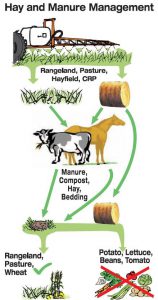
Warning from herbicide label.
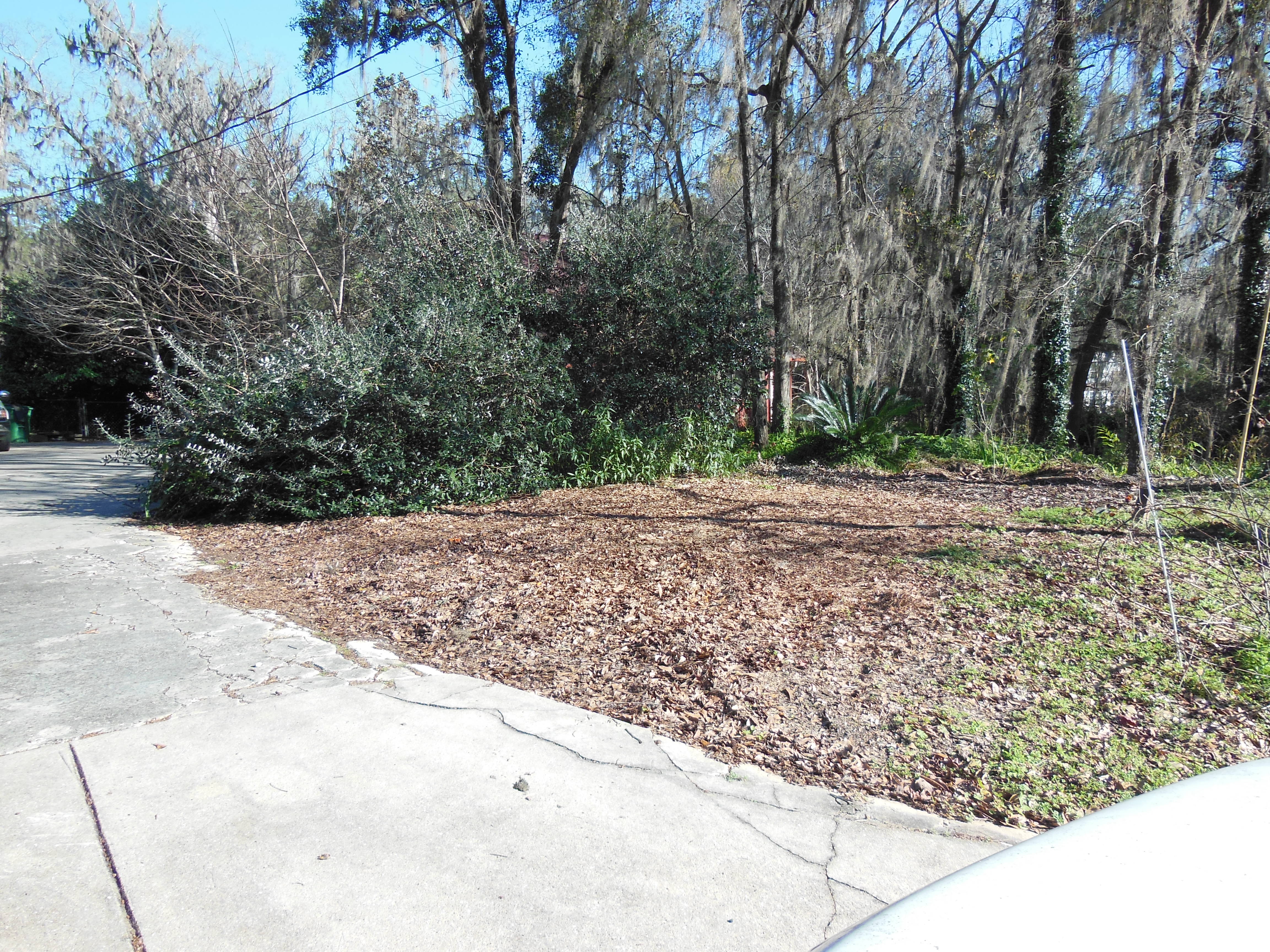
by Mark Tancig | Apr 14, 2016
Do you have a bare spot that you would like to see go away? How about a problem getting something to grow in a particular area? I’m not talking about that receding hairline or bald spot, I’m talking about your lawns and gardens. Many residents have these problems, whether it is too much shade under our beautiful oaks, that stubborn orange clay, or that hot, dry sand. Often times, the best remedy for these situations is to use mulch. Mulch is a versatile tool in the home landscape that provides many benefits while adding aesthetic beauty.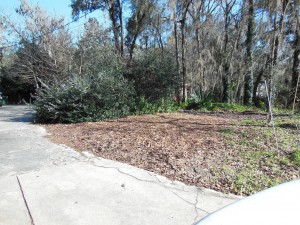
Some of the benefits of using mulch in your landscape include retaining soil moisture, reducing the amount of weeds, insulating the soil (keeps it warm during cold months and cool during the warm season), improving soil health through decomposition, and protecting plants from mower and/or trimmer damage. In addition, mulch can help protect the quality of local lakes and streams by reducing soil erosion and stormwater runoff. Therefore, not only can it improve your yard, but it can also help minimize impacts to our precious natural resources.
When purchasing mulch, there are many options available. Local lawn and garden shops offer many different types of mulch based on their origin (type of wood the mulch comes from), texture (shredded vs. nuggets), color, and, of course, cost. When considering these options, here is some information to help you choose:
- Origin. Cypress mulch comes from the harvesting of natural cypress wetlands and it not recommended by the University of Florida Florida-friendly Landscaping Program. Pine bark mulch is produced from the paper/pulp industry as a marketable byproduct. Pine needle mulch is harvested from pine tree farms as the trees mature to harvestable size.
- Plant Needs. Pine mulch (either bark or needles) can lower the pH of your soils as it breaks down over time. This is great for acid-loving plants such as azaleas, gardenias, and blueberries, but may affect species that require a high pH.
- Texture. The coarser the texture, the longer the mulch will last. Finely shredded mulches breakdown quicker than coarse mulches, such as bark nuggets. As the mulch breaks down, it adds organic content to your soil, thus improving soil health.
If you want to save money, you can often contact local tree trimming companies for their hard day’s work. As they trim or remove trees, the smaller material is shredded into mulch and they are often willing to drop it off in your yard instead of paying for its disposal. It is best to allow this freshly shredded mulch to cure for some time before placing it in your garden beds since freshly shredded mulch can temporarily reduce the availability of nitrogen in the soil.
When using free mulch options, be aware that weed seeds may be present.
Be sure to apply the mulch in a two to three inch layer in your landscape beds or around trees and shrubs. It’s not a bad idea to aerate any old mulch already present to prevent matting or compaction. This can be done with a rake or pitchfork.
So cover up that soil to improve the look and fertility of your landscapes and to reduce erosion and stormwater runoff. If you have any questions about mulch, more information is available at the Florida-Friendly Landscaping website: http://fyn.ifas.ufl.edu.











